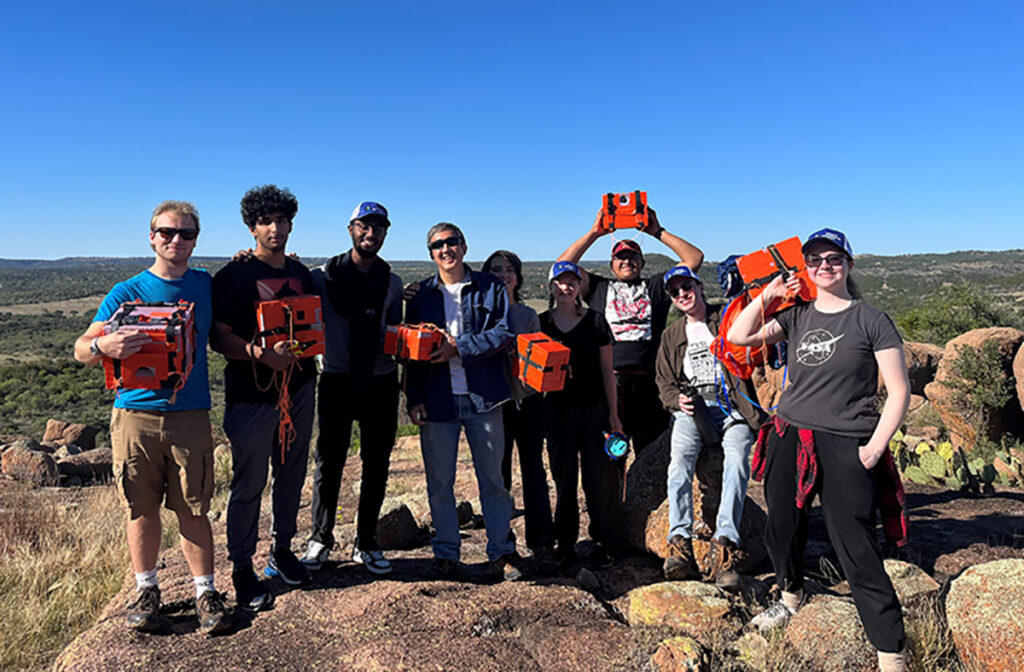
By Magdalena Bolinaga
Boston University News Service
On April 8, North America witnessed its second total solar eclipse in seven years,
while a group of students from Olin College examined it using high-altitude balloons.
The Nationwide Eclipse Ballooning Project (NEBP), funded by NASA, supports 53
university teams across the country to collect data for engineering and atmospheric science goals
while enhancing STEM learner participation.
Students learn mechanical design, gather scientific data, conduct research and
programming through the project. The atmospheric data reveals gravity waves, weather patterns
and planetary boundary layer changes during the eclipse.
The Olin College team, led by mechanical engineering professor Christopher Lee,
launched their first NEBP balloons for the Annular eclipse on Oct. 14, 2023. The students
from mechanical, electrical and computer engineering majors are gathering again in Junction,
Texas for the next total solar eclipse.
“One of the big gains of the project is that this is a great experience for students, giving
them some real hands-on experience on a real science mission,” said Lee.
Each team received about $10,000 worth of equipment that needed to be assembled.
NEBP provided them with data measuring sensors and electronic hardware for GPS tracking
their balloon. Once the balloons went up to about 90,000 feet, they live streamed video to the NASA
eclipse website and recorded all the atmospheric data.
“The standard equipment we were given includes video cameras, flight computers,
electronic hardware and a parachute to cut down the weight,” said Lee.
Junior Miranda Pietraski and sophomore Mark Belanger have been working for the
Olin College team with Lee since the first launch in October. They were both really excited about
the eclipse and flew out to Texas ahead of the big day.
“I worked on all of this stuff over the summer as well as the fall semester,” said Pietraski.
“It was definitely cool to see that what I made actually worked.”
“I wasn’t here over the summer, but it was amazing to come back during the fall and see
all the progress,” said Belanger. “We had started with all the separate parts that NASA sent, and
it was very fun to assemble them and see them come together.”

The students said that one of the project’s challenges is the FAA restrictions,
specifically the weight limit. The balloon had to be a maximum of 12 pounds and 5 feet in
diameter when fully inflated. However, the equipment weighed about 9 pounds, so if they wanted to
add any other features, they were limited.
“In addition to the video and atmospheric sensors, we added a radiation sensor, a pan-
and-tilt camara and disposable film cameras,” said Pietraski. “It’ll be curious to see the sensor
data and pictures, which should be higher resolution than the last launch.”
Although the eclipse will be more visible from the launching site in Texas, it will cross
North America and pass through the United States, Canada and Mexico. In Boston, the eclipse
reached a maximum of 93%.
More than 90% totality may seem like a lot, but for the full total eclipse effect, where the
day turns to night, people had to travel to northern New England. Viewers experienced a
few minutes of 100% totality in Vermont, New Hampshire and Maine.
“As I understand from eclipse people, it’s really all or nothing,” said Lee. “If you are not
in the total eclipse zone, you will not be getting the full effect.
Even though the eclipse didn’t reach totality in Boston, it was still essential to remain
safe. Lee said that wearing specialized eclipse glasses designed for solar viewing was
necessary to avoid eye injuries.
He recommended looking through a pinhole projector if people didn’t want to look
directly into the eclipse. However, protective glasses were still vital.
Lee said: “This project is quite the adventure for us.”

